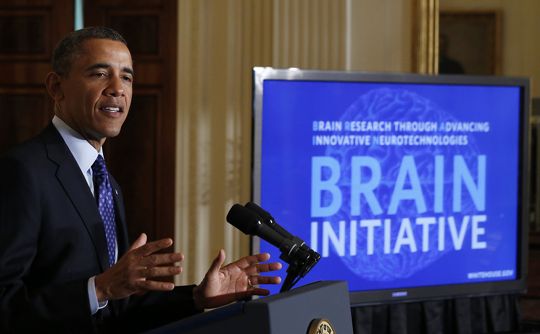Patient Summit USA
Understand the patient journey to build better adherence and engagement platforms
Is Obama’s New Project a No-BRAINer?
Modelled on the Human Genome Project, President Obama revealed the blueprint for the ambitious BRAIN initiative this week. The venture has been lauded by many groups advocating brain research but critics are raising questions of uncertain funding and scientific challenges.

Speaking at a conference in the White House on Tuesday, Obama outlined the details of the unprecedented research project that was first mentioned during his State of the Union speech in February. The scheme's goals include understanding how the brain forms memories and controls human behaviour; how it becomes damaged by conditions such as Parkinson's disease and autism; and how it can be repaired when afflicted by Alzheimer's disease, post-traumatic stress disorder and other illnesses.
The BRAIN initiative — Brain Research through Advancing Innovative Neurotechnologies — is to combine the resources of the federal government with philanthropies and scientific entrepreneurs to identify and characterize a detailed map of the brain's complex circuitry. Without an operating manual to refer to in the case of brain malfunctions, scientists are often left in the dark when it comes to effectively treating the related illnesses. Said Obama: “There is this enormous mystery waiting to be unlocked.”
Scientific hurdles
In recent years, both public and private efforts have begun to get to grips with the basic wiring of the brain. The main focus of BRAIN is to develop technology for exploring how the brain records, processes, stores and retrieves information.
But some scientific experts believe that, while the project is likely to yield benefits, it is unlikely to provide a complete map of the brain. Among the challenges cited include the amount of neurons (about 100 billion) in the human brain, which are linked by about 150 trillion connections, or synapses. With current technology, some estimate it would take years to map the roughly 10,000 synapses that branch from just a single neuron, indicating a hazy, if not extremely lengthy timeline for project success.
By comparison, while the efforts to decode the human genome proved fruitful, this involved the mapping of only three billion base-pair sequences of DNA. Dr Francis Collins, director of the federally funded National Institutes of Health (NIH), who likened the initiative to mapping the human genome, has noted himself that “some would call [BRAIN] audacious”. And because it could cost billions of dollars over several decades to build a comprehensive brain map, long-term funding could be another challenge.
Funding concerns
Under next week's White House budget plan, Obama has proposed $100 million to be allocated to the project for its first year – federal funding for the Human Genome Project’s first year was $28 million in comparison. But the President has already acknowledged that it may be difficult to secure this capital amid current political tensions in Washington. And while private sector partners the Allen Institute for Brain Science, the Salk Institute for Biological Studies, the Howard Hughes Medical Institute and the Kavli Foundation have committed $158 million to the project, the funding available beyond this year for the BRAIN initiative remains uncertain.
If Obama's proposed budget for the project is approved by Congress, the Defense Advanced Research Projects Agency (DARPA) will disburse about $50 million in grants under the BRAIN initiative next year, the NIH will contribute $40 million, and the National Science Foundation $20 million.
Positive impact
Potential issues aside, the effort from the Democratic government may renew interest in drug manufacturers in the neuroscience space – an area largely ignored in recent years as a result of expensive, unsuccessful attempts at developing drugs due to a significant lack of knowledge of how the brain actually works.
Dr. Christer Nordstedt, vice president of neuroscience research and clinical development at Eli Lilly and Co, which has nine potential new brain drugs in the works, likened the task to trying to fix a broken engine without knowing how it is supposed to work. "We've been handicapped by the fact that we have been studying diseases in animals that don't really exist in animals. Mice don't get depression. They don't get schizophrenia. They don't get Alzheimer's disease," he said.
Patient Summit USA
Understand the patient journey to build better adherence and engagement platforms
